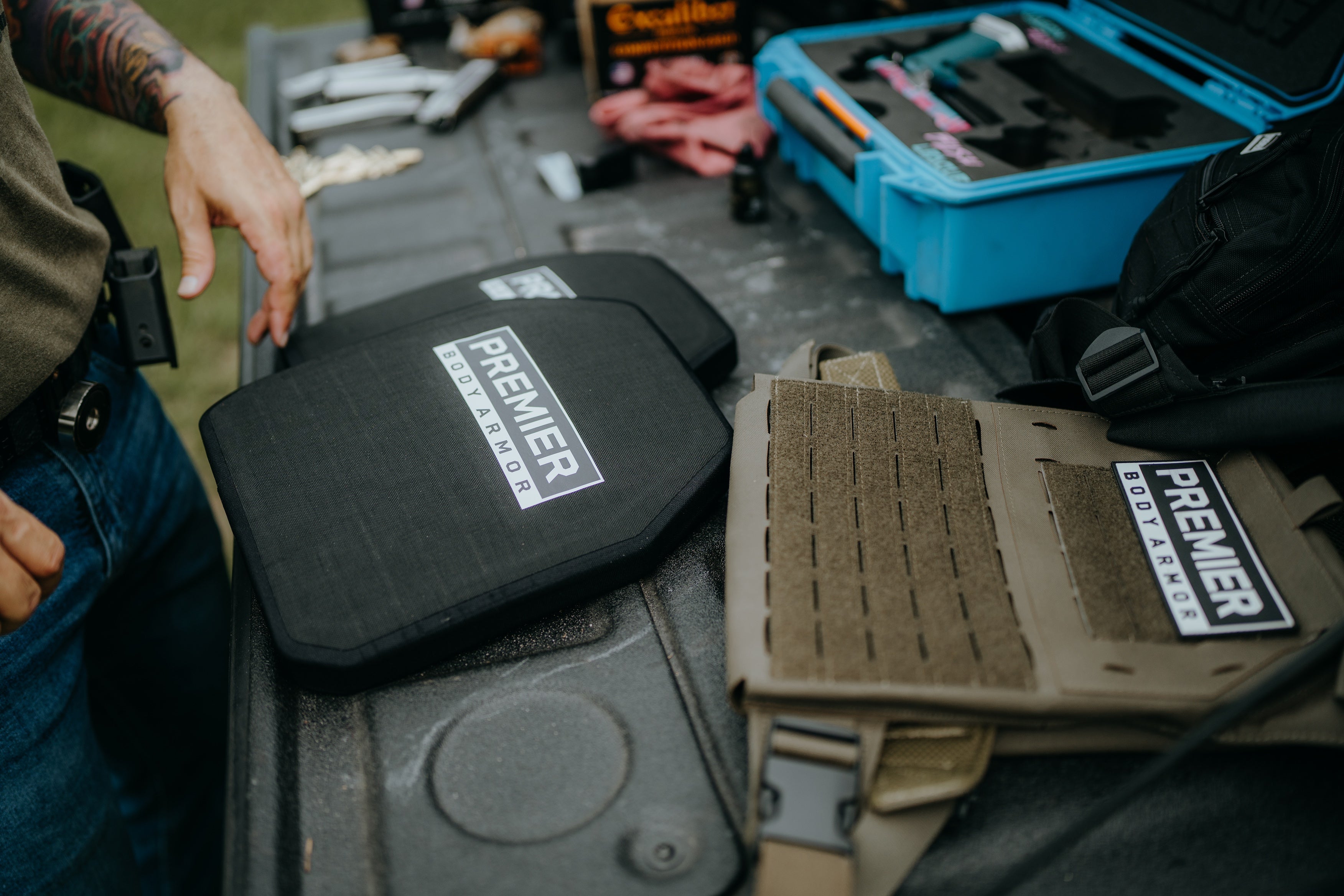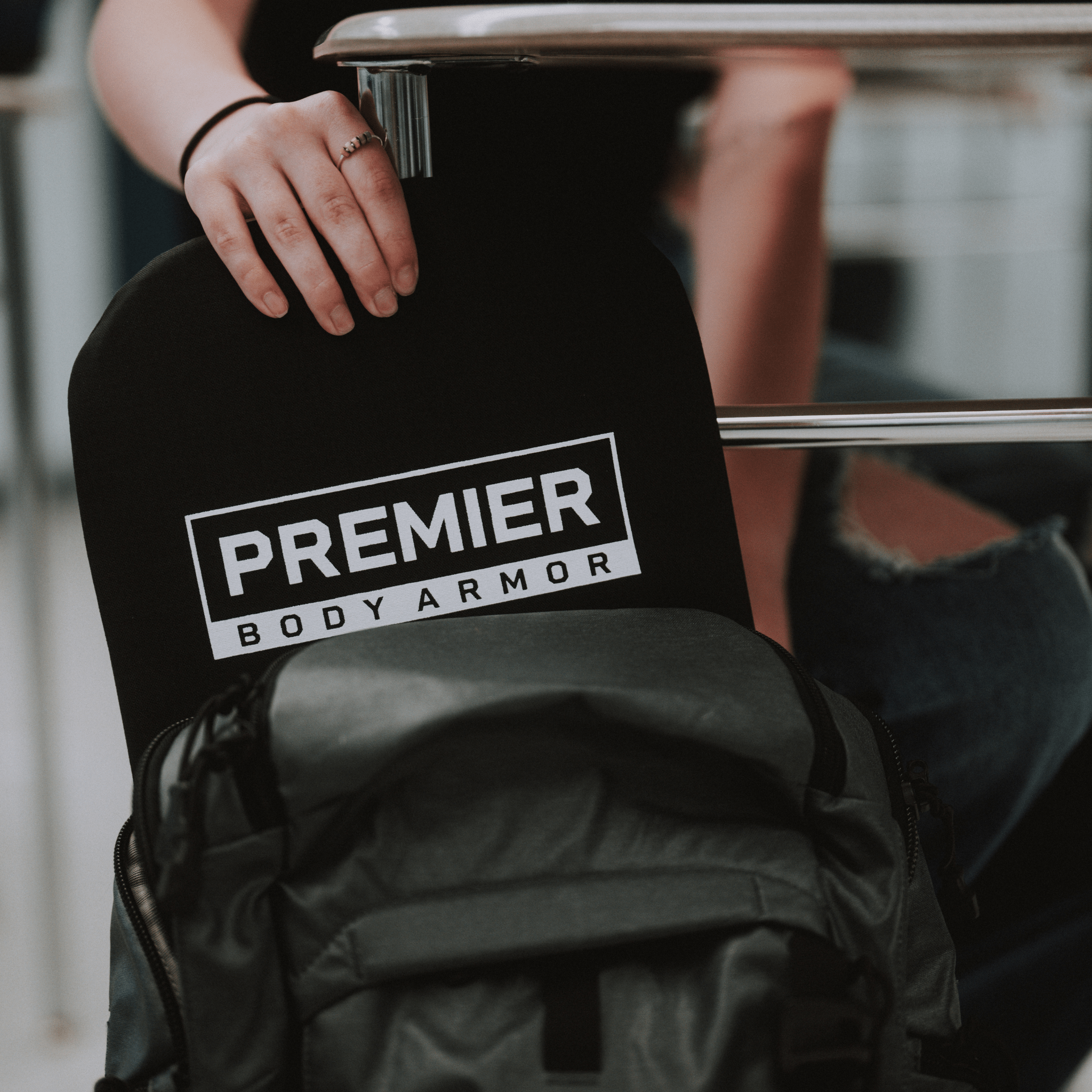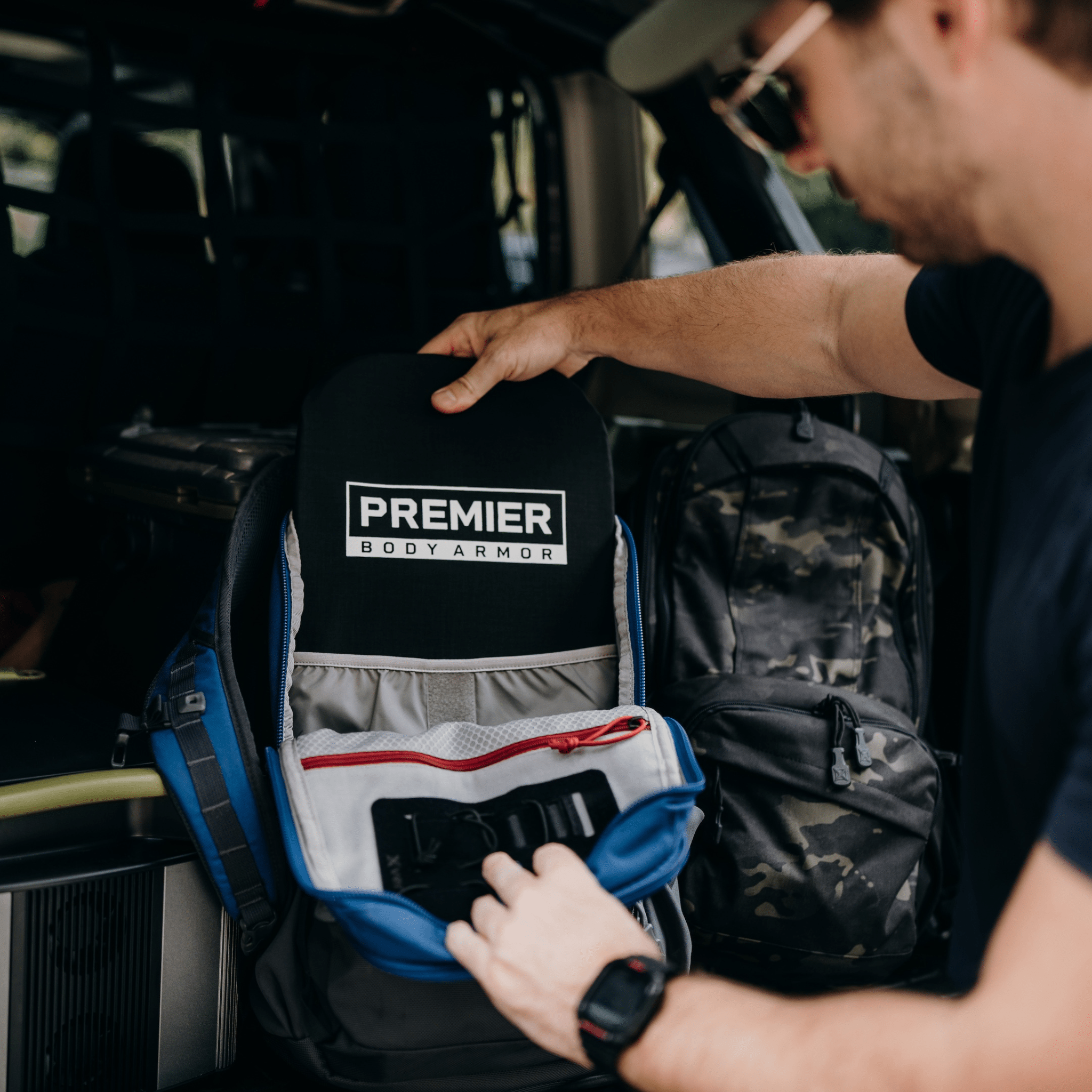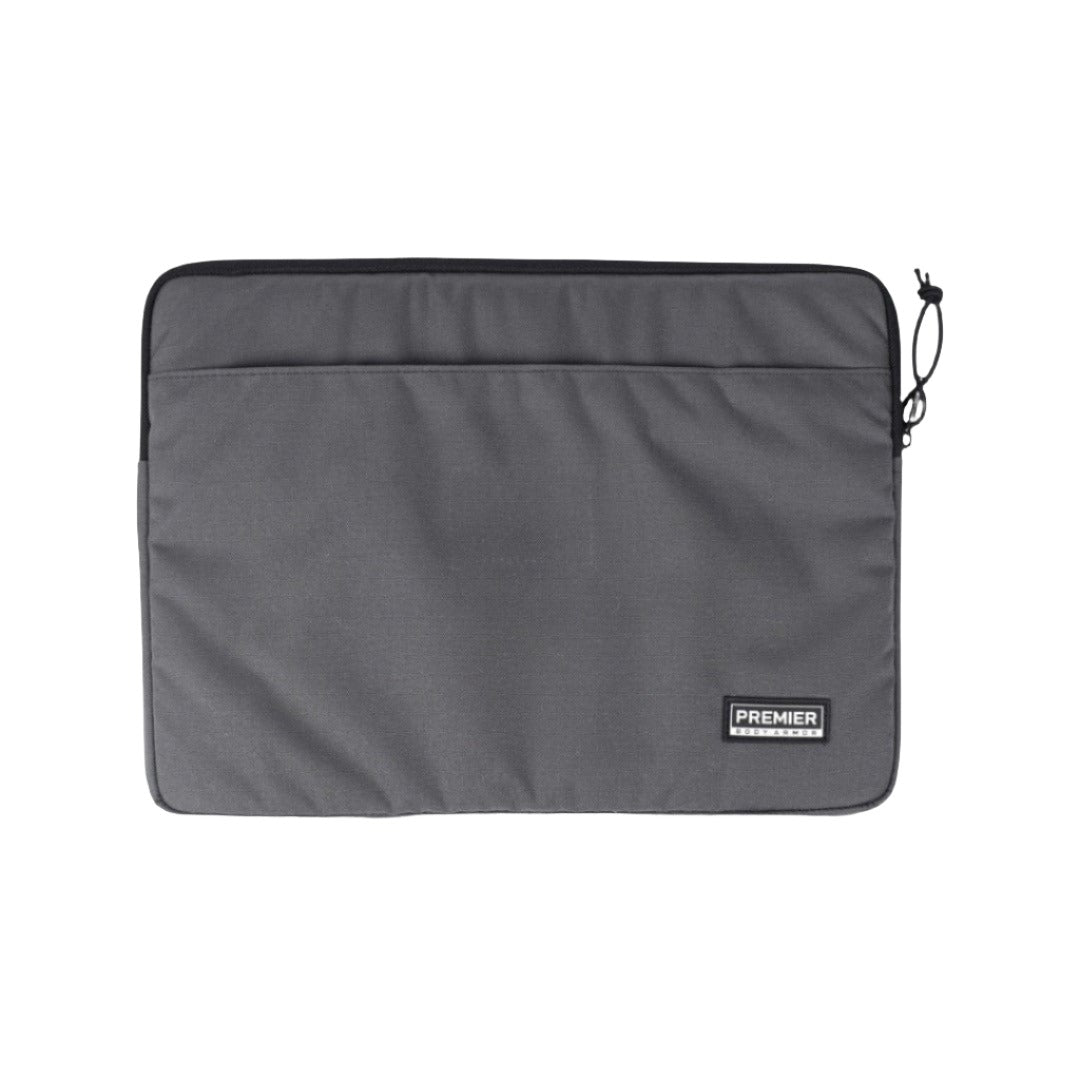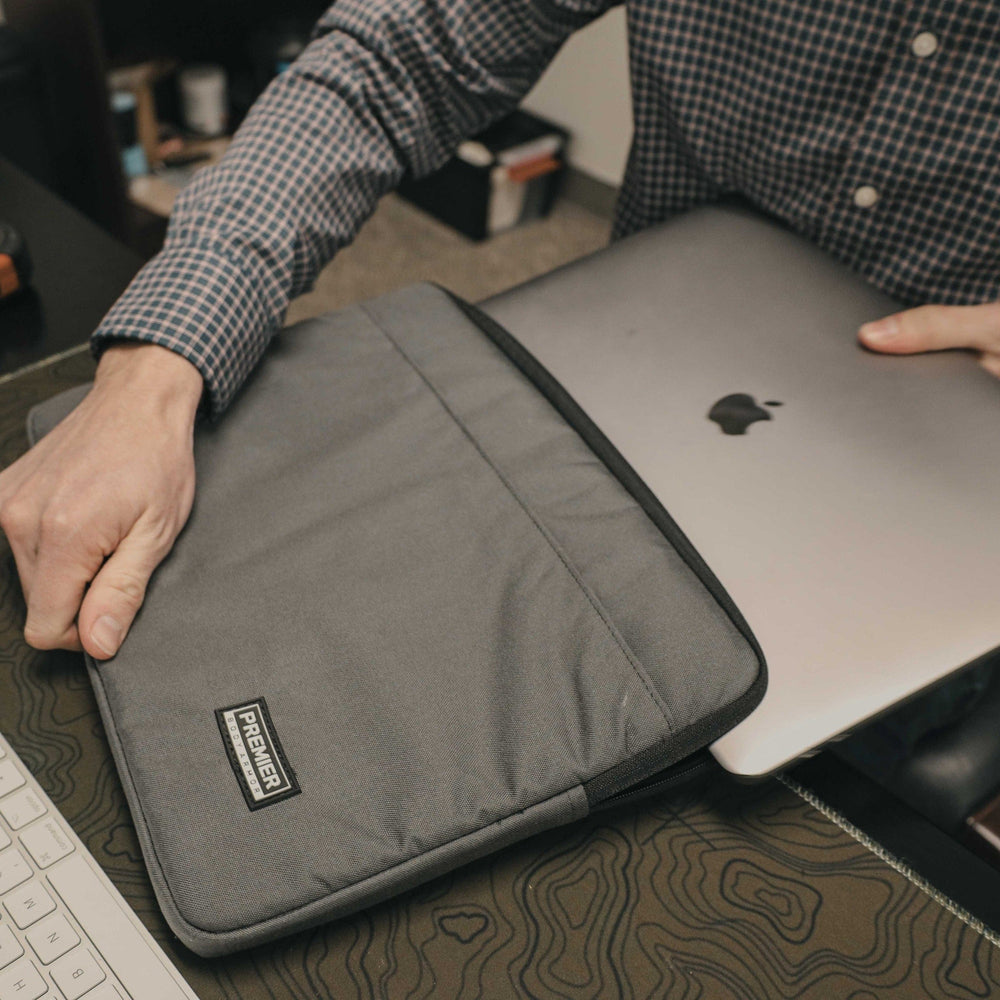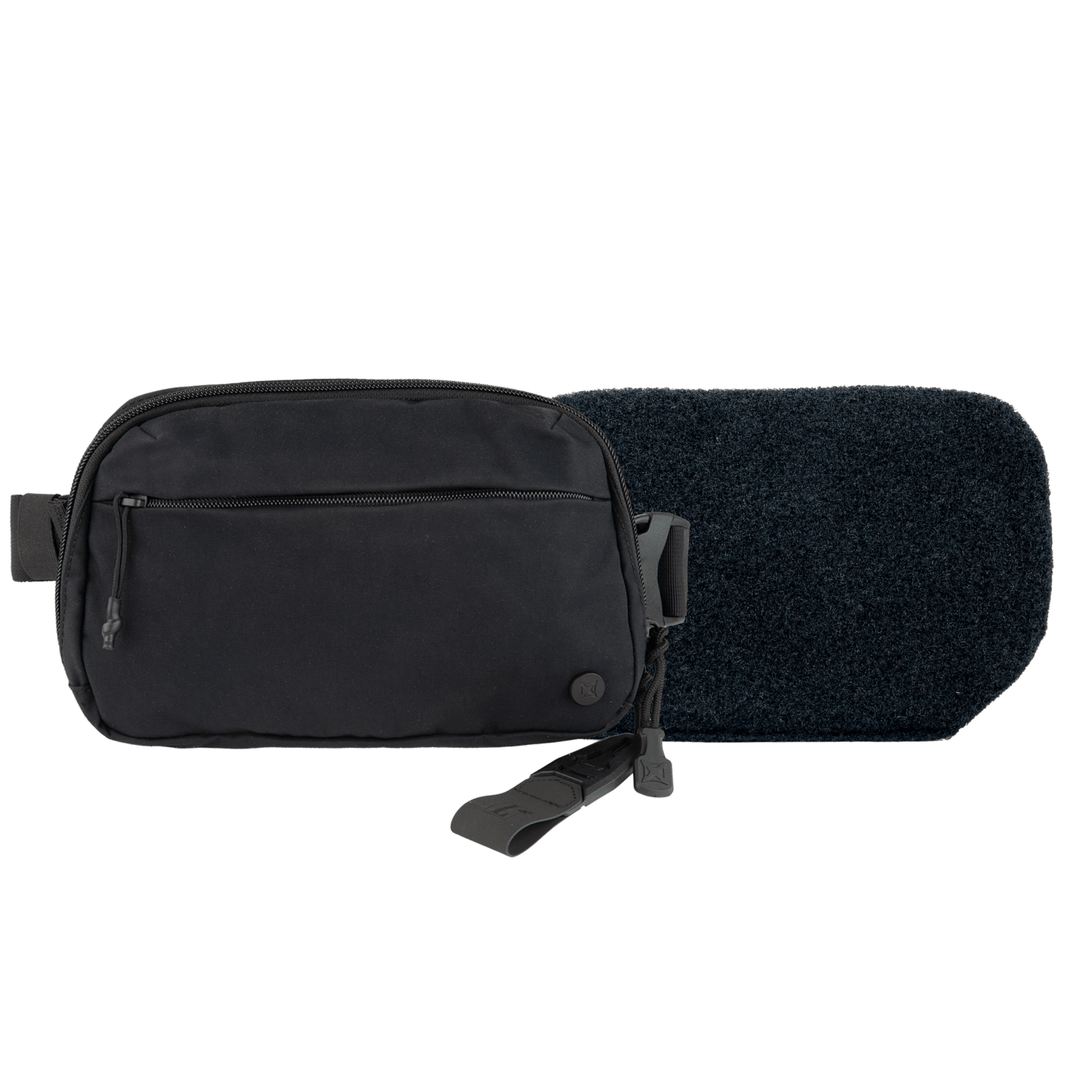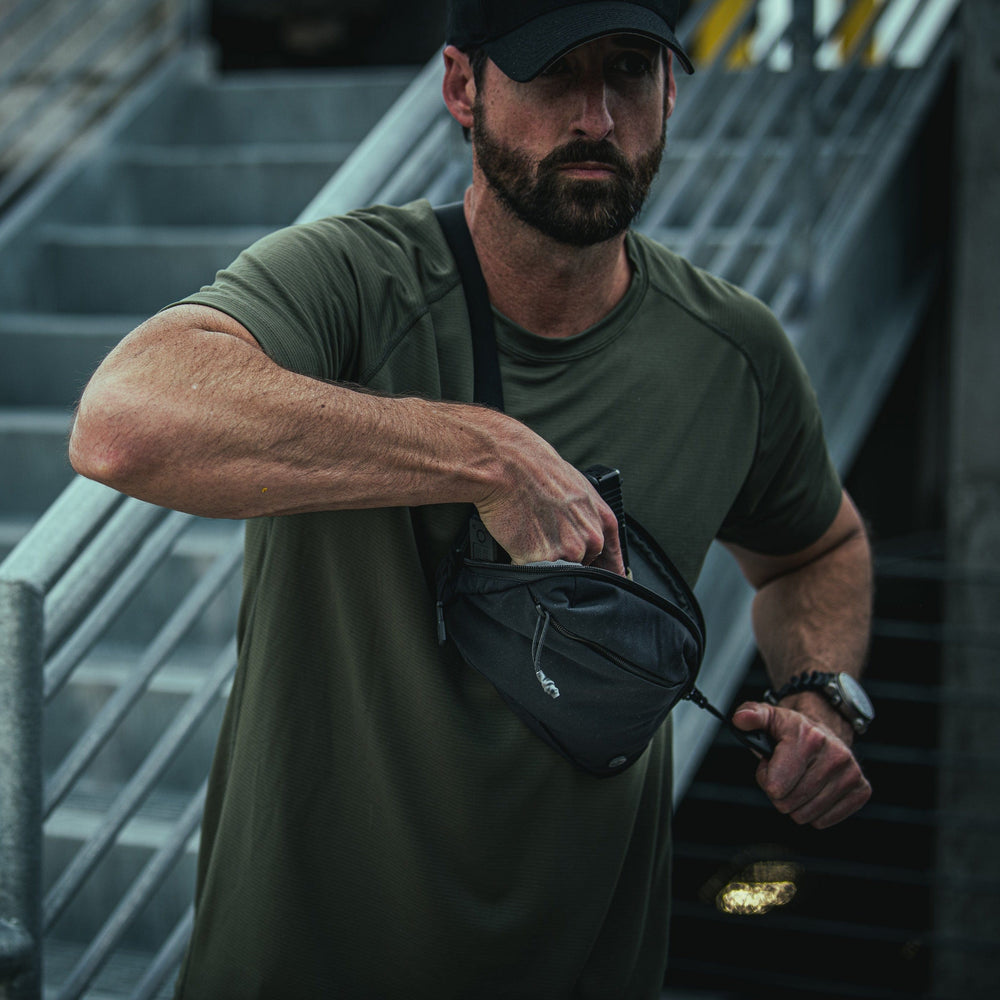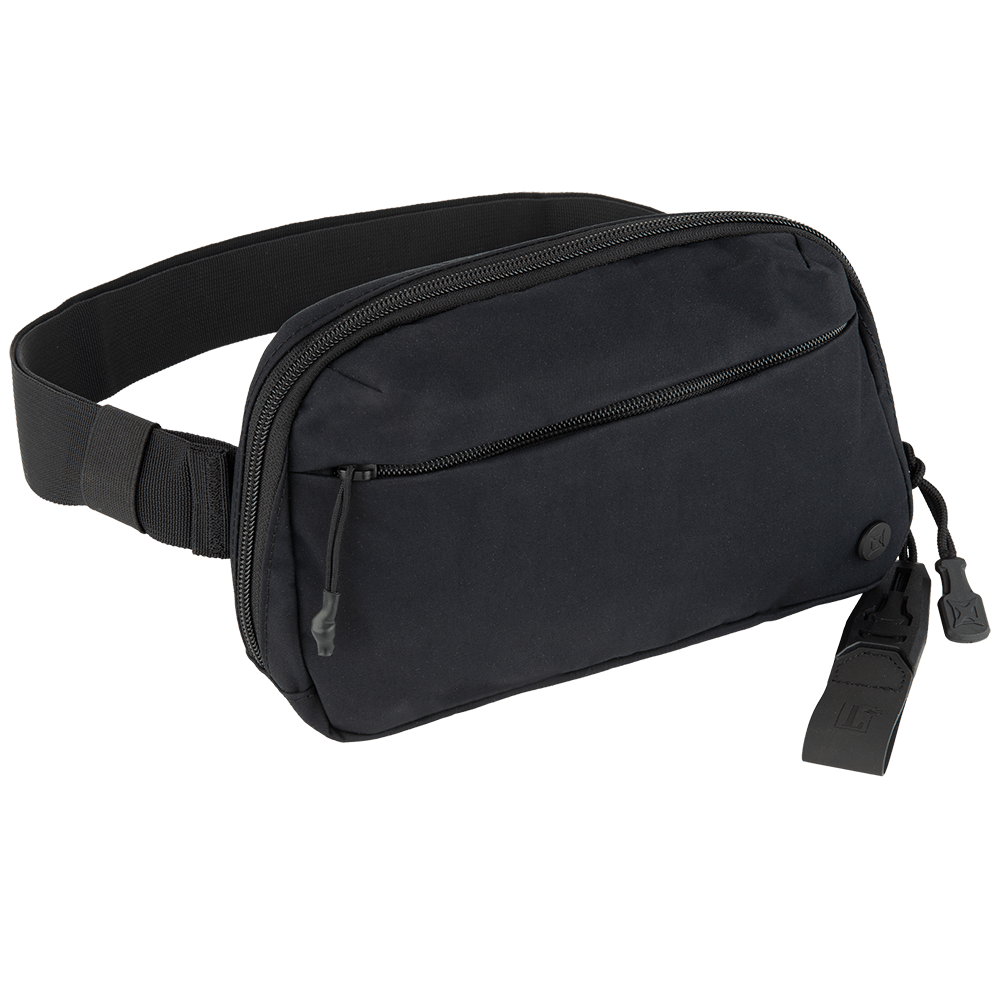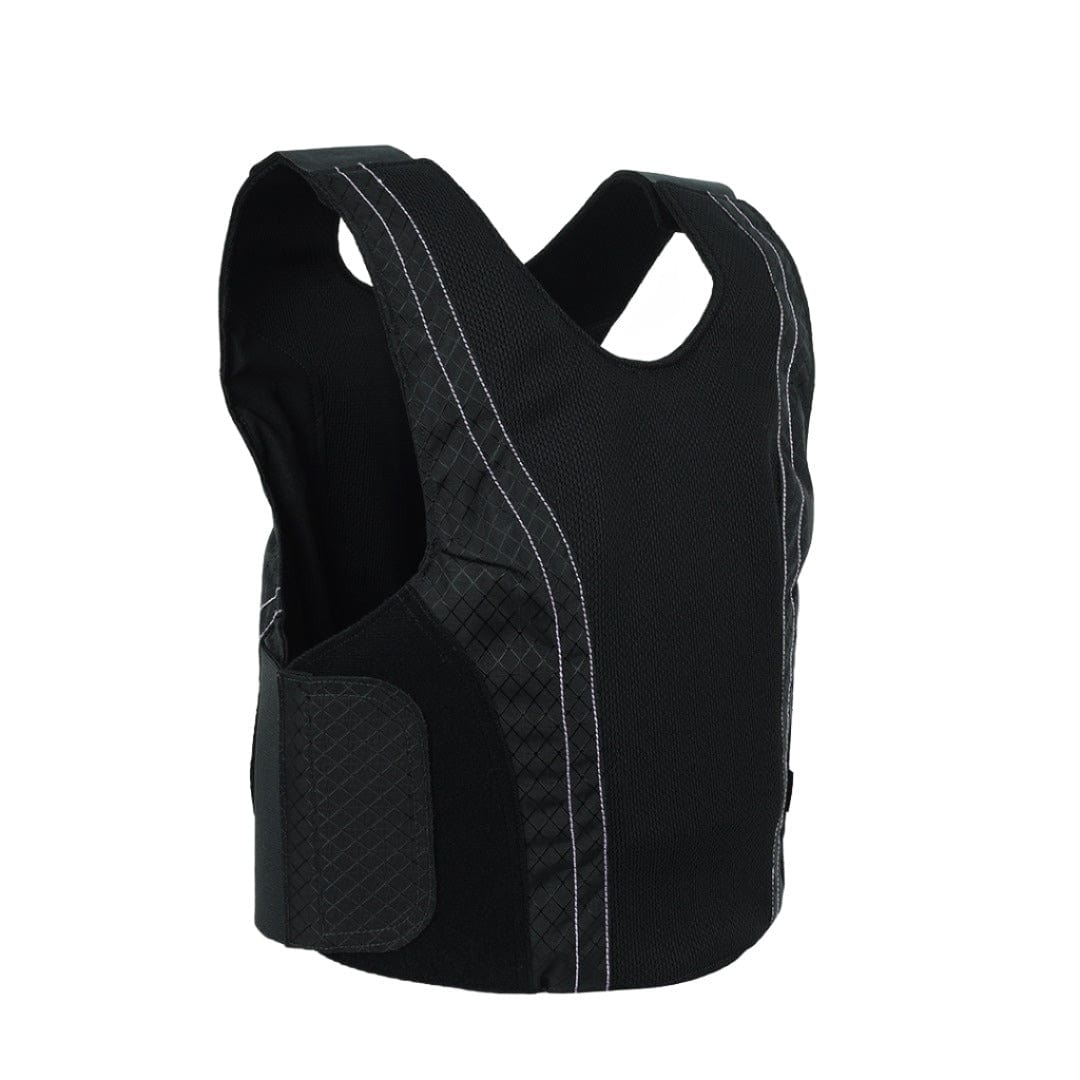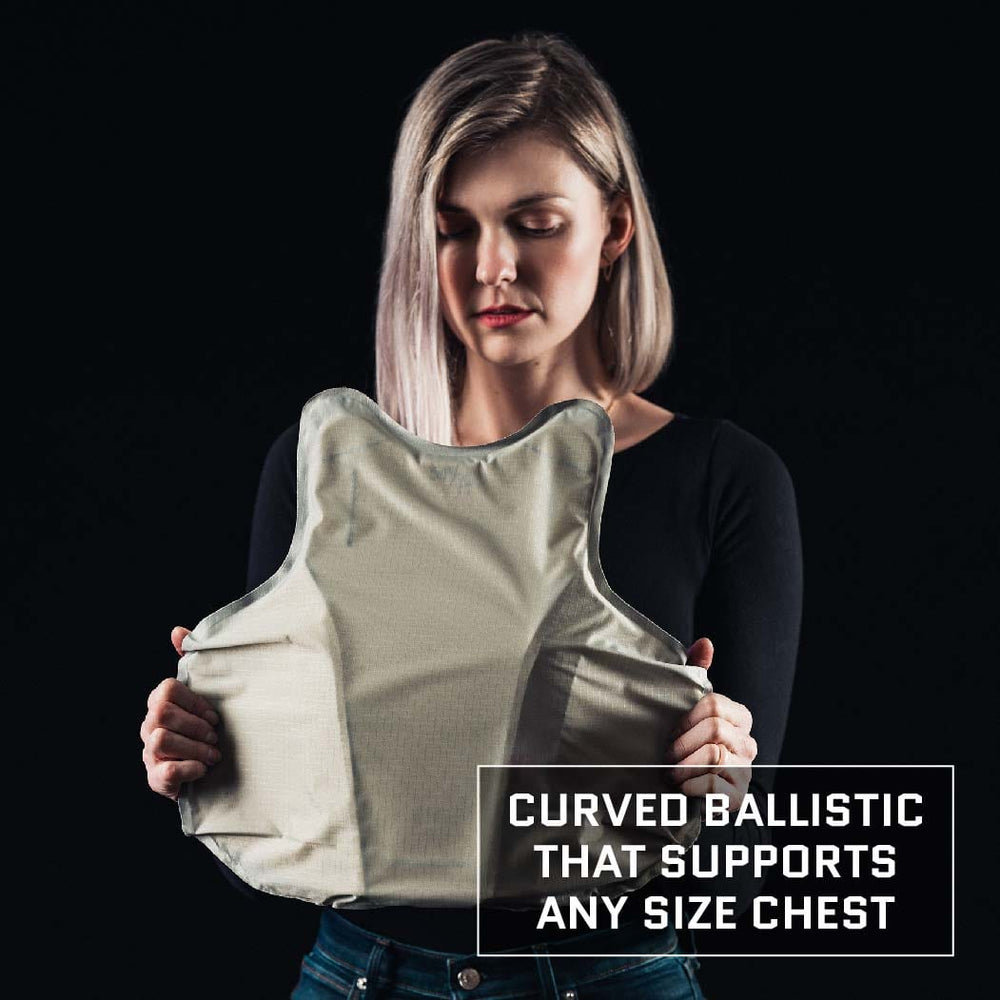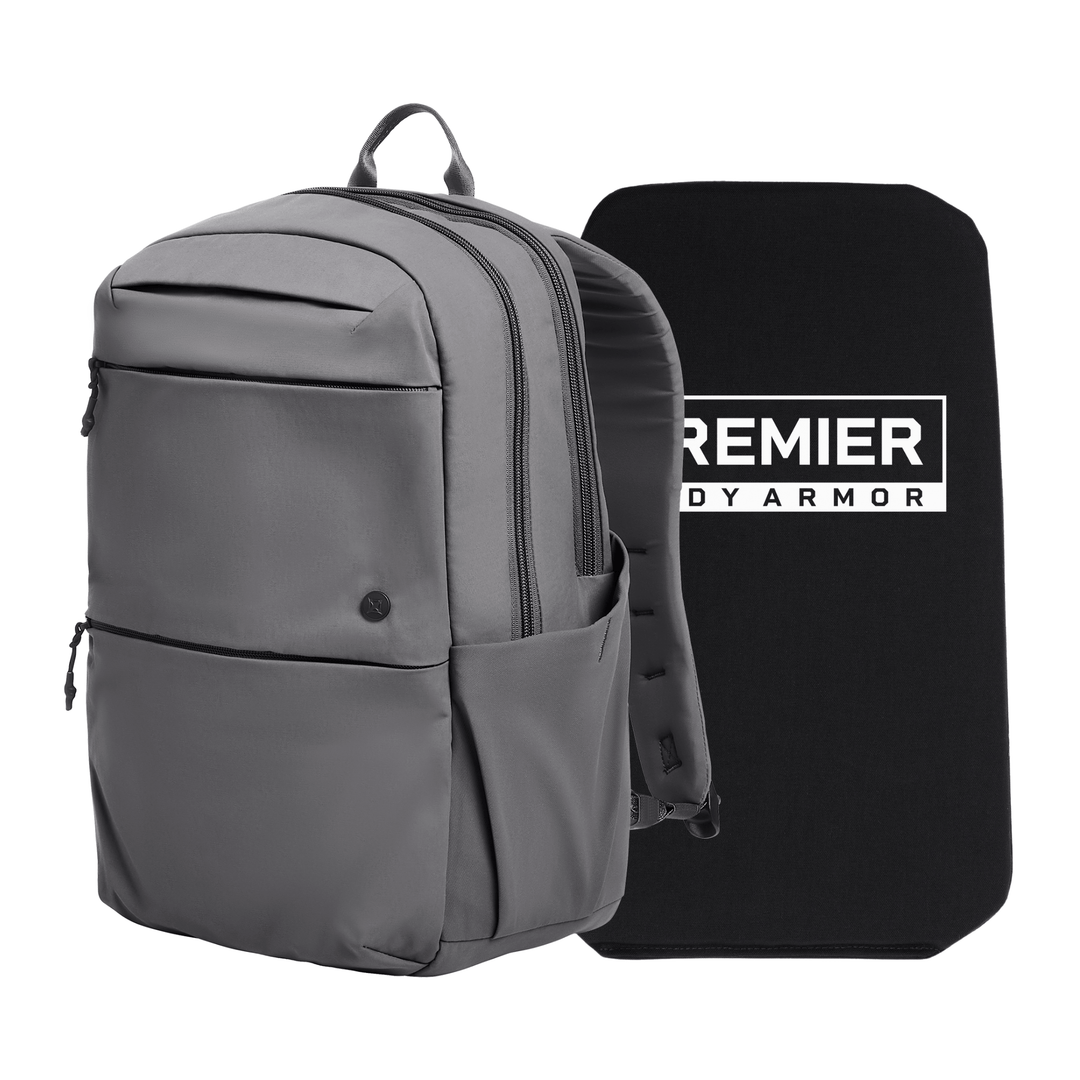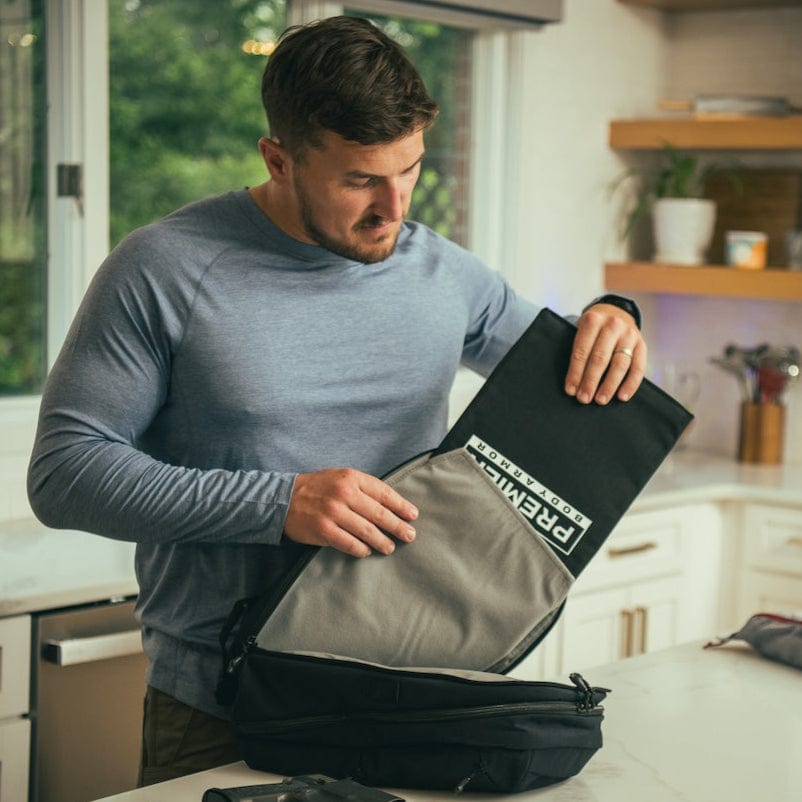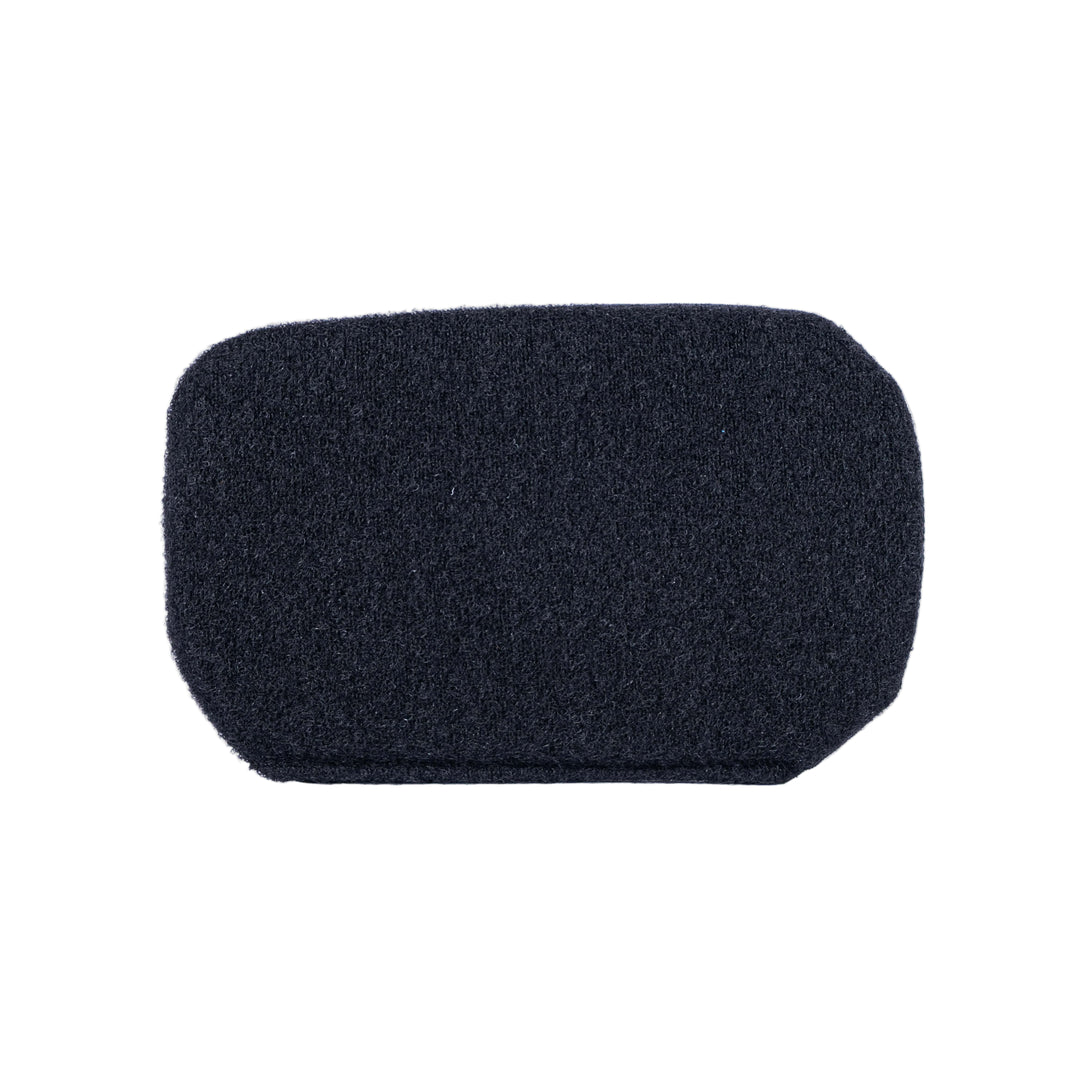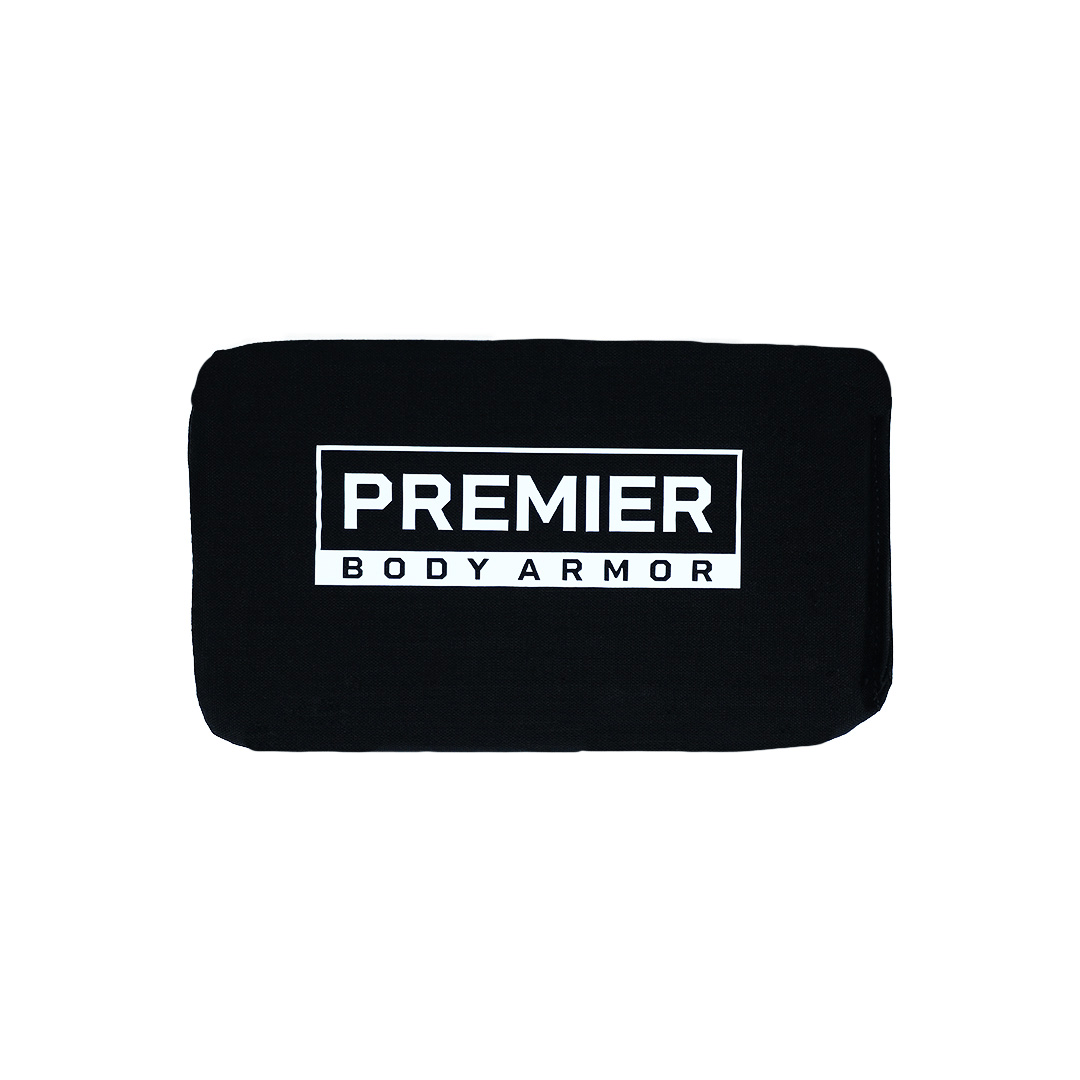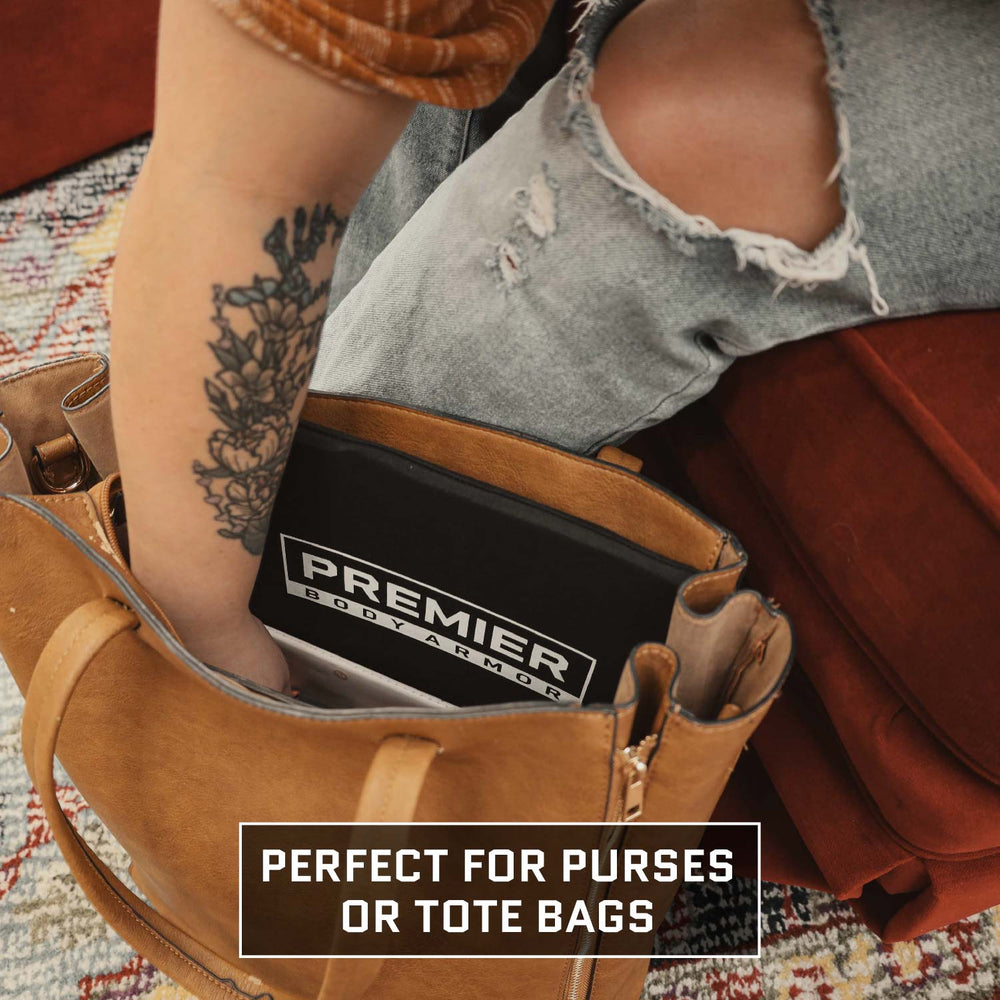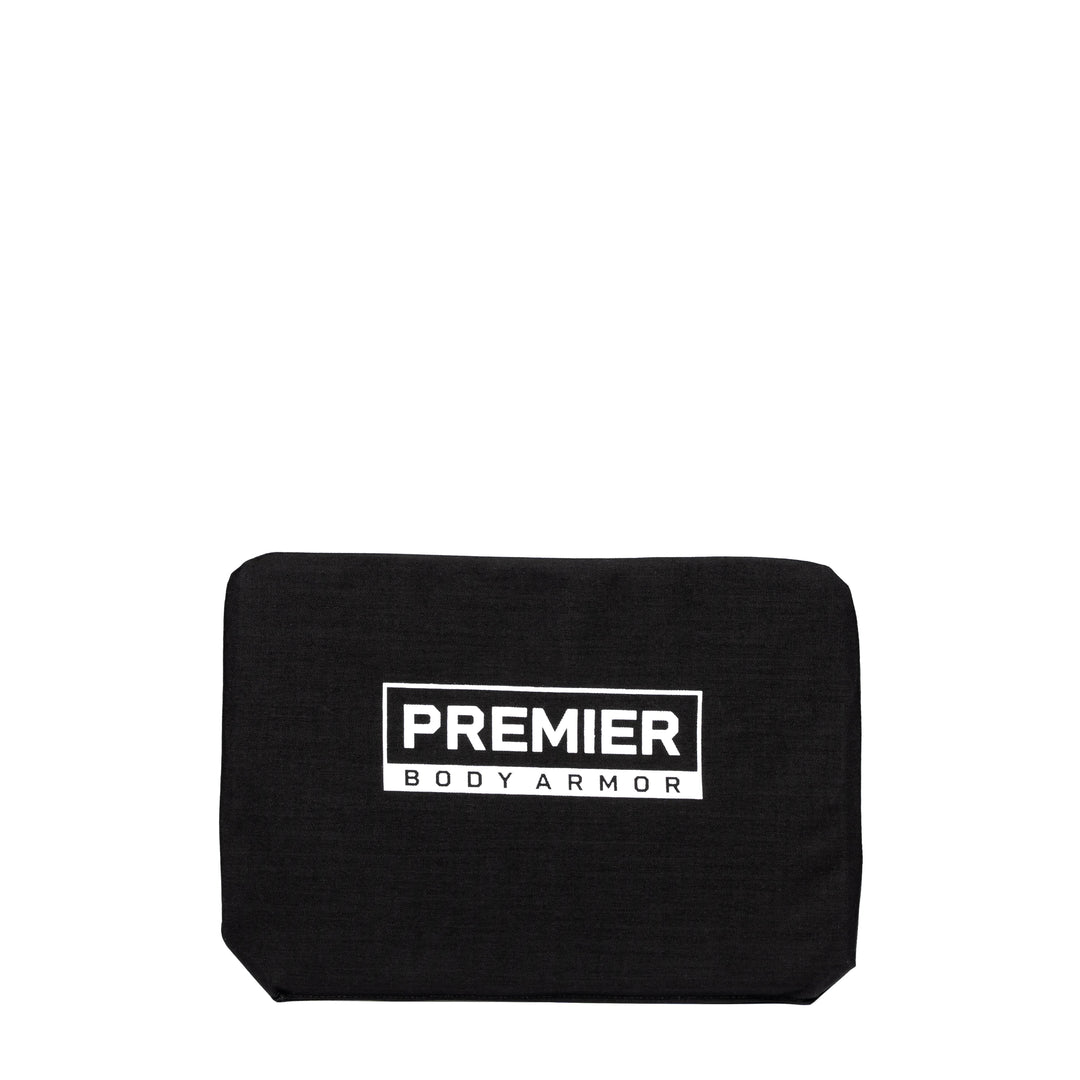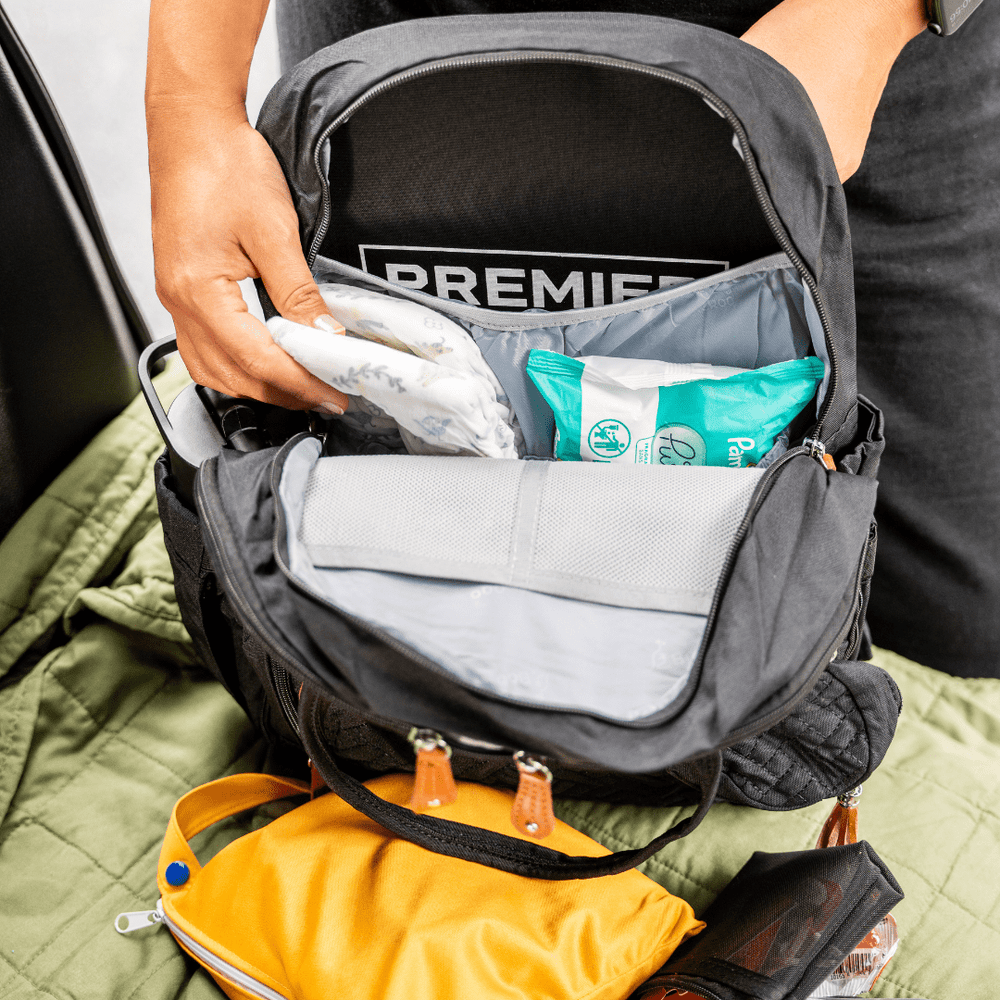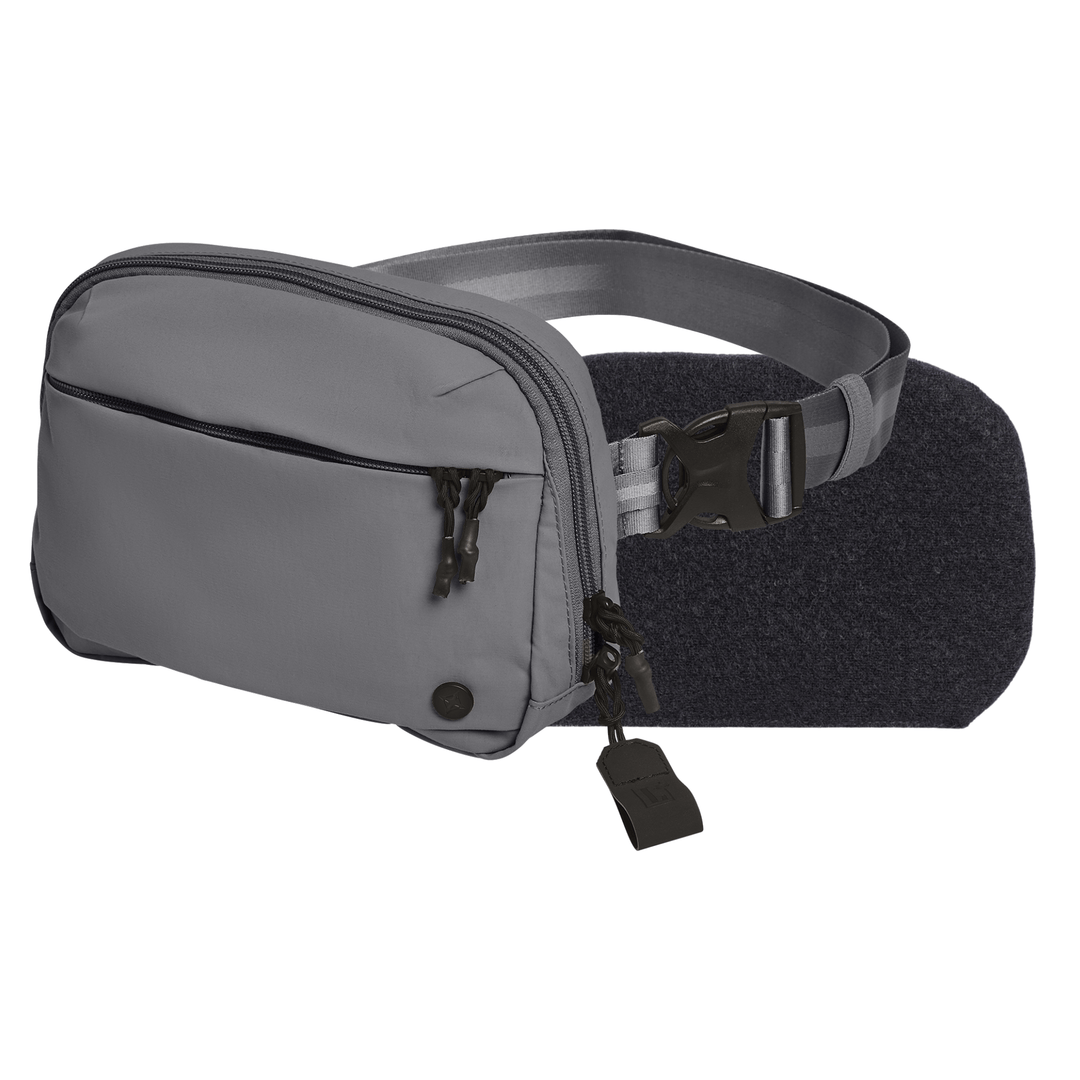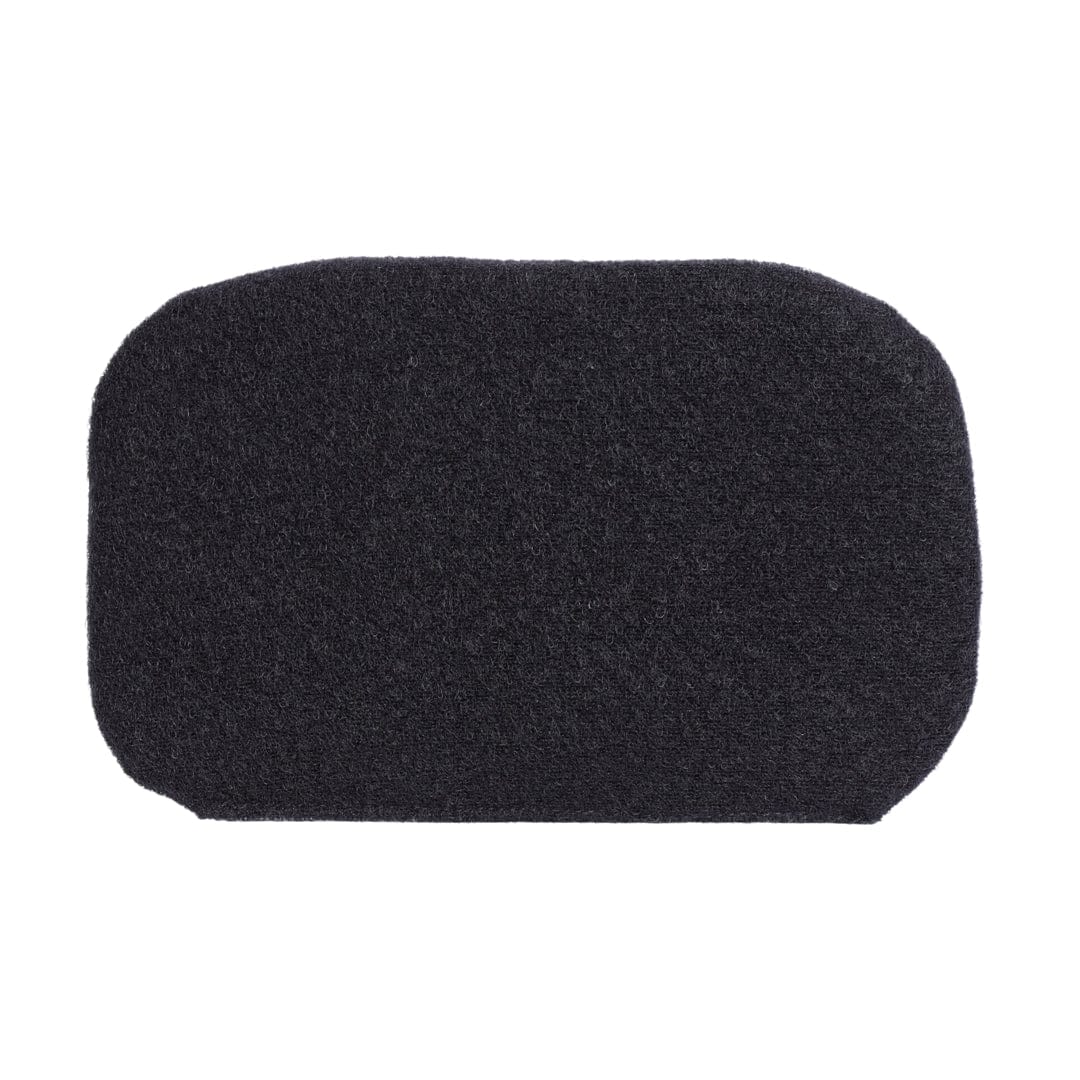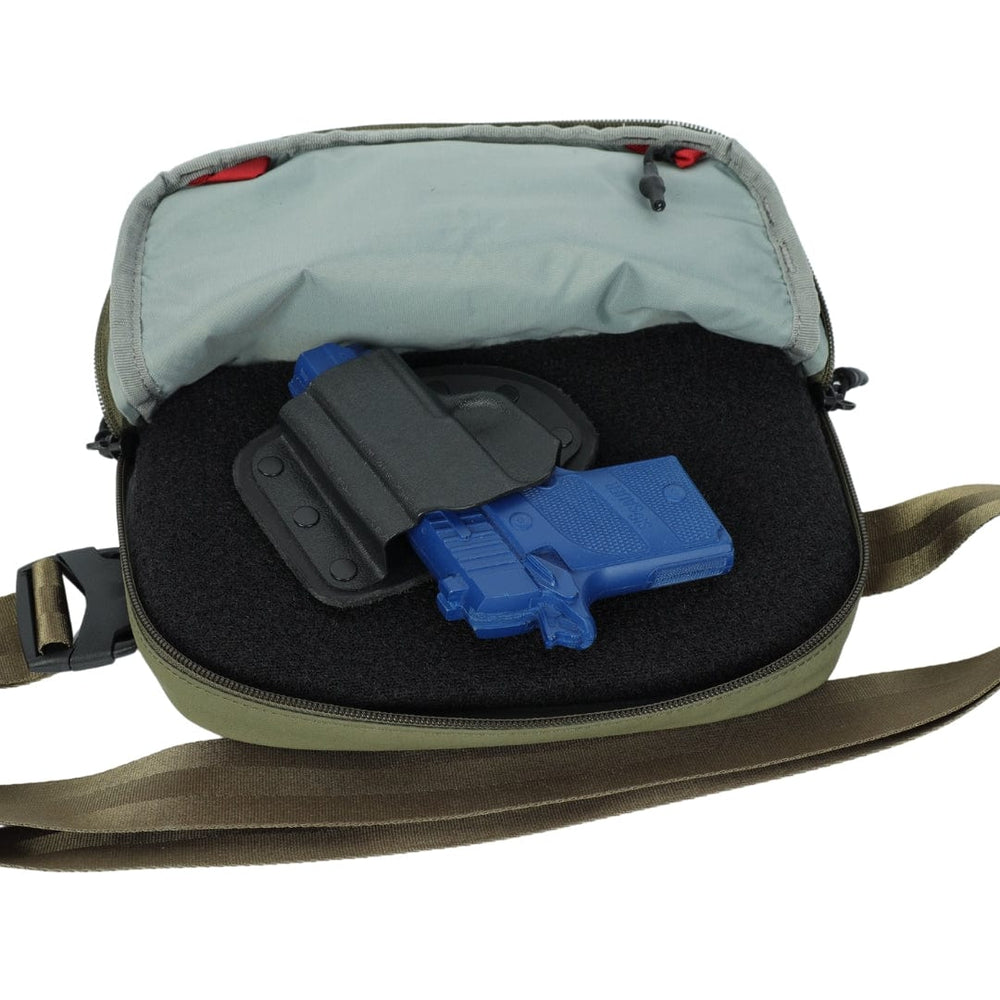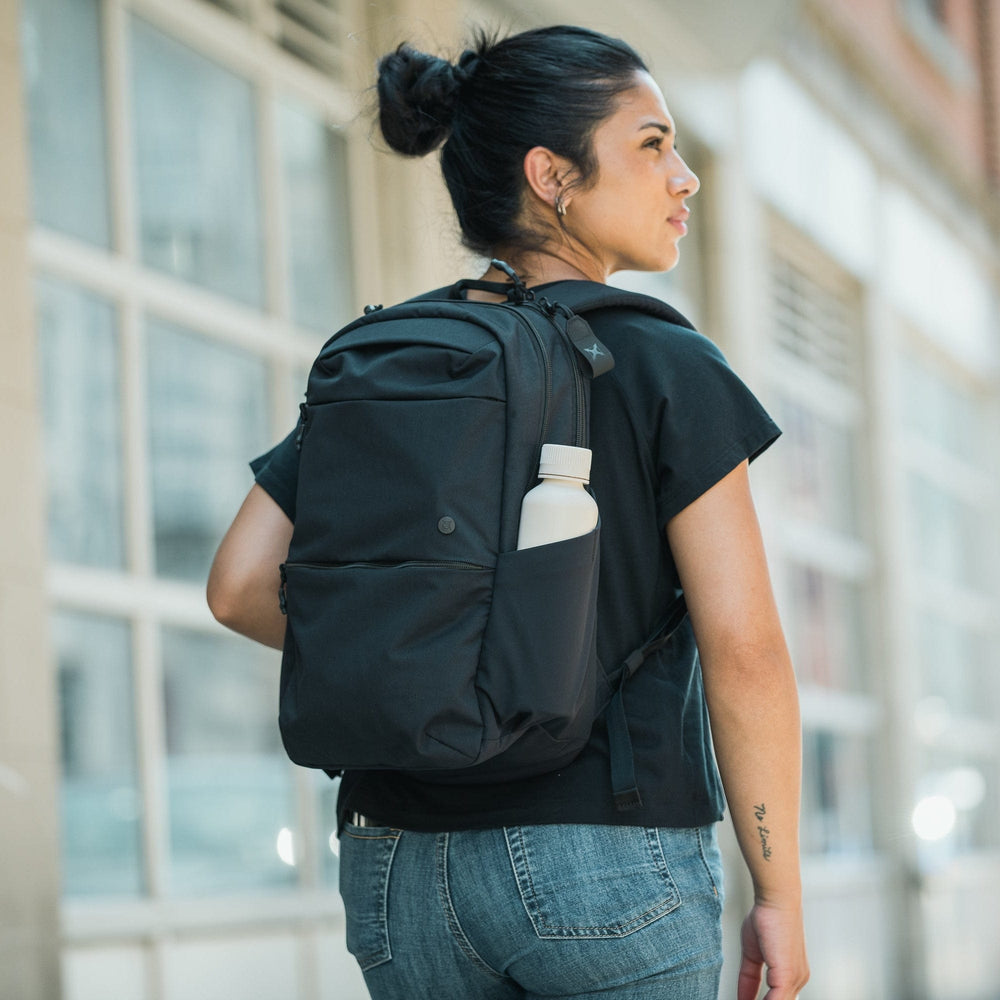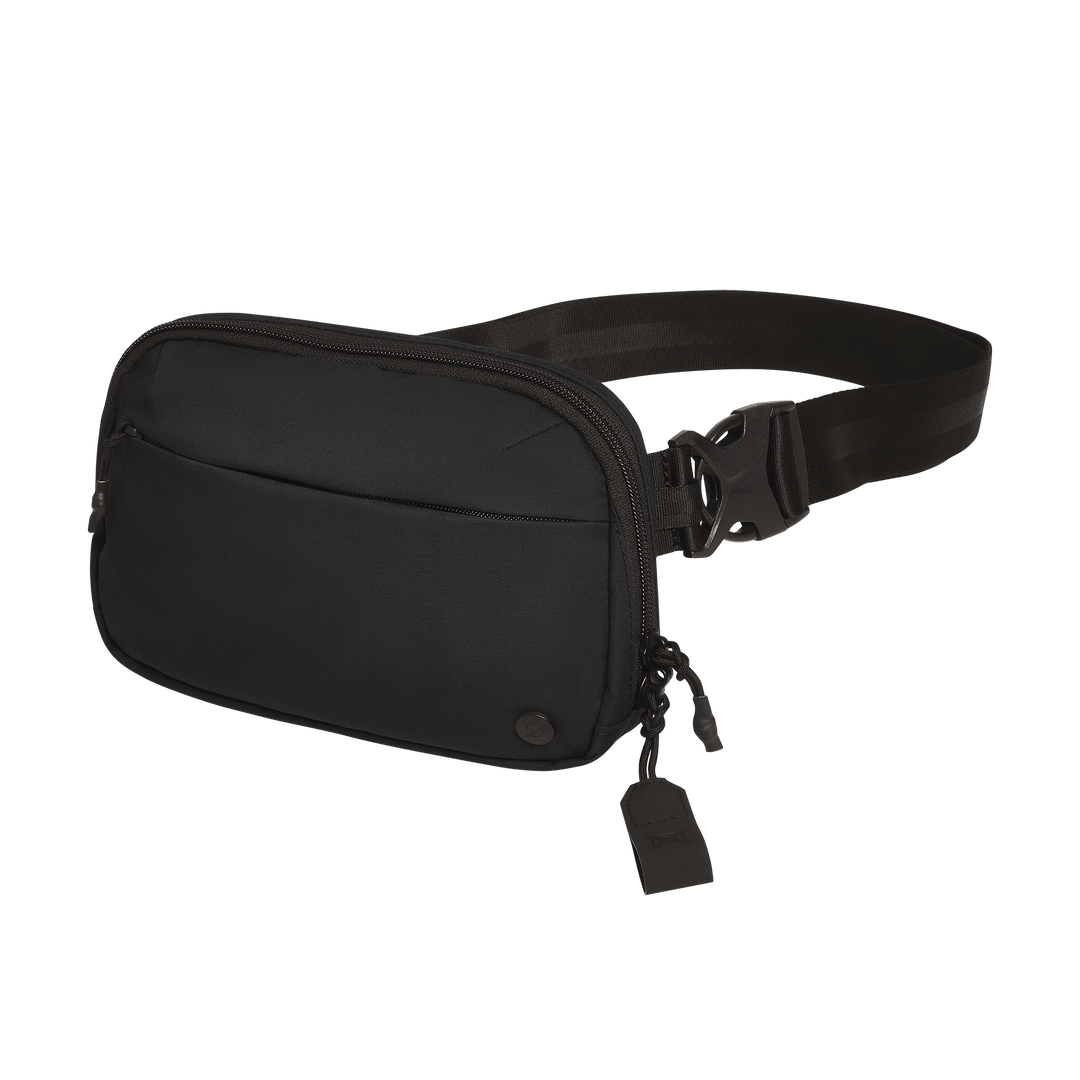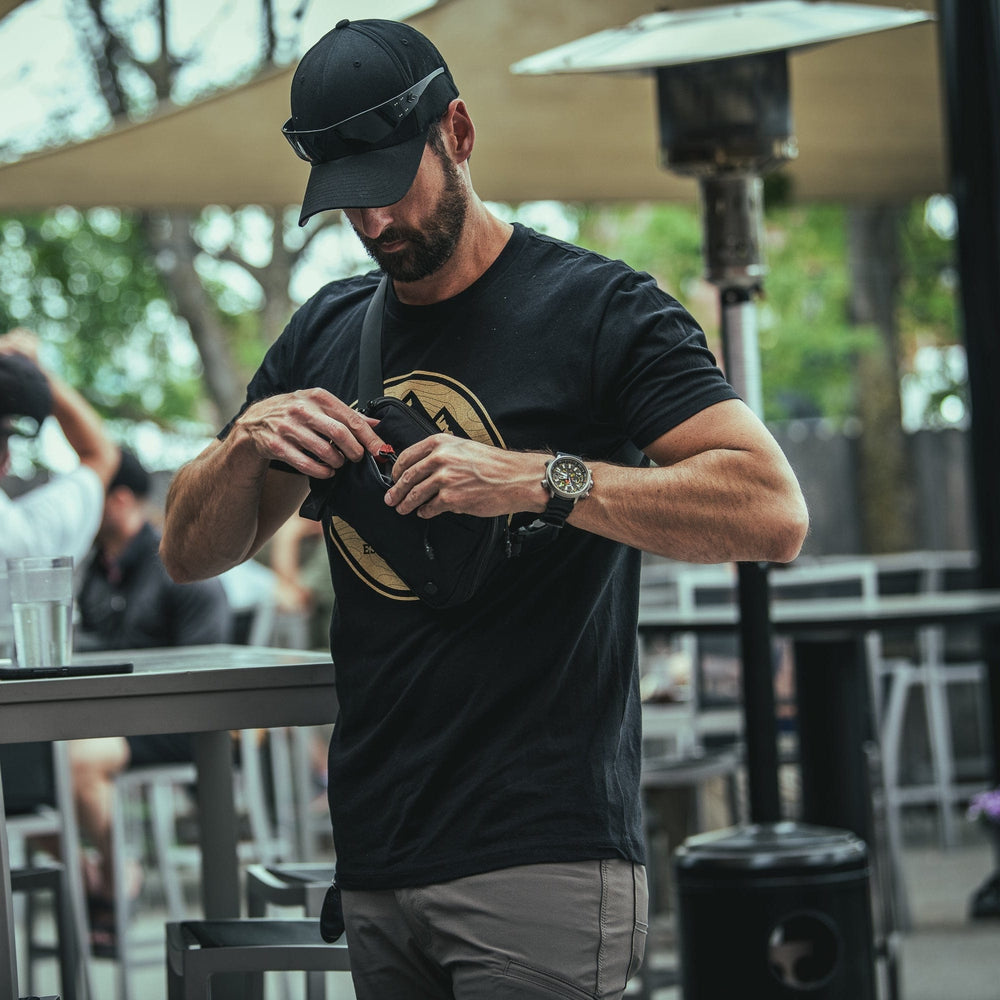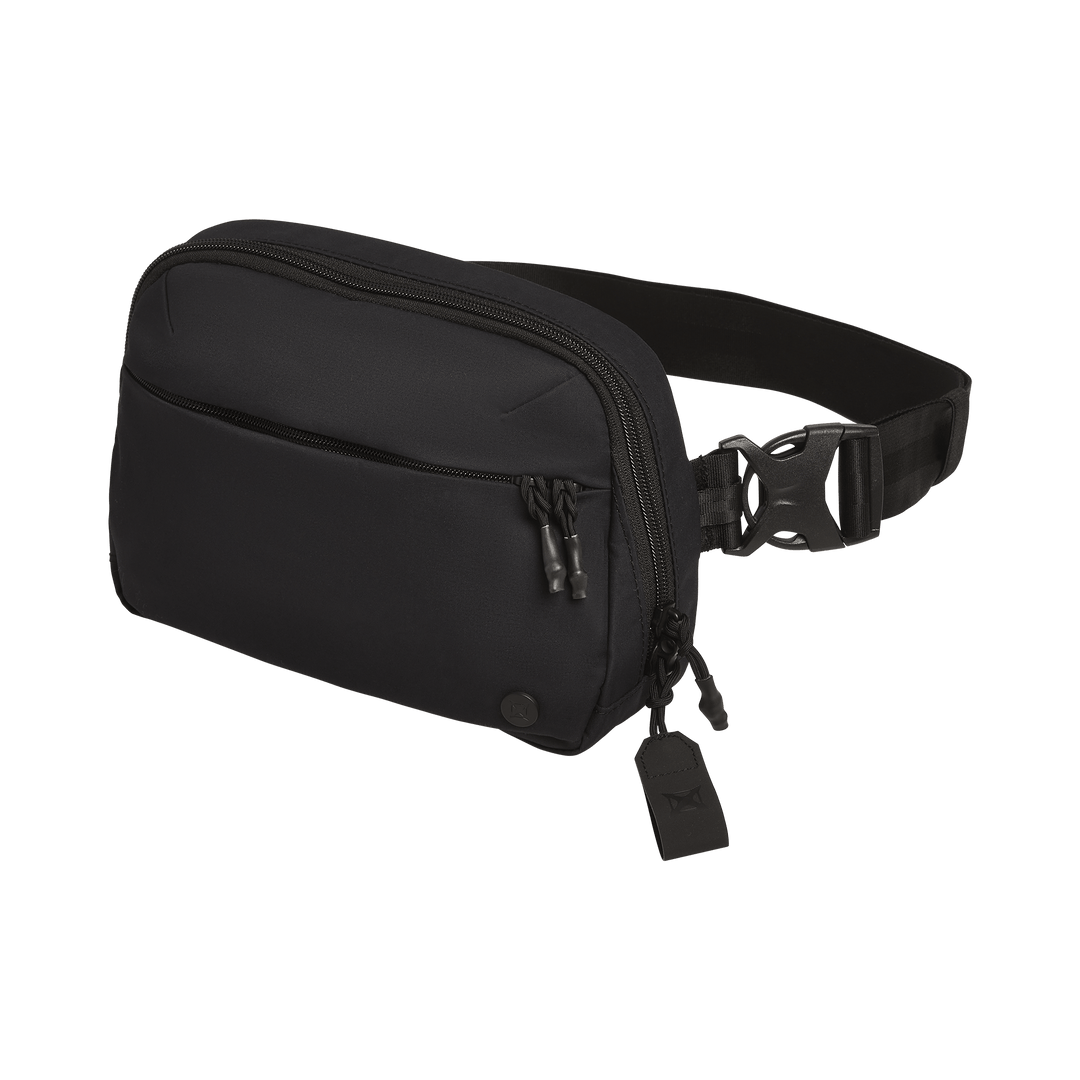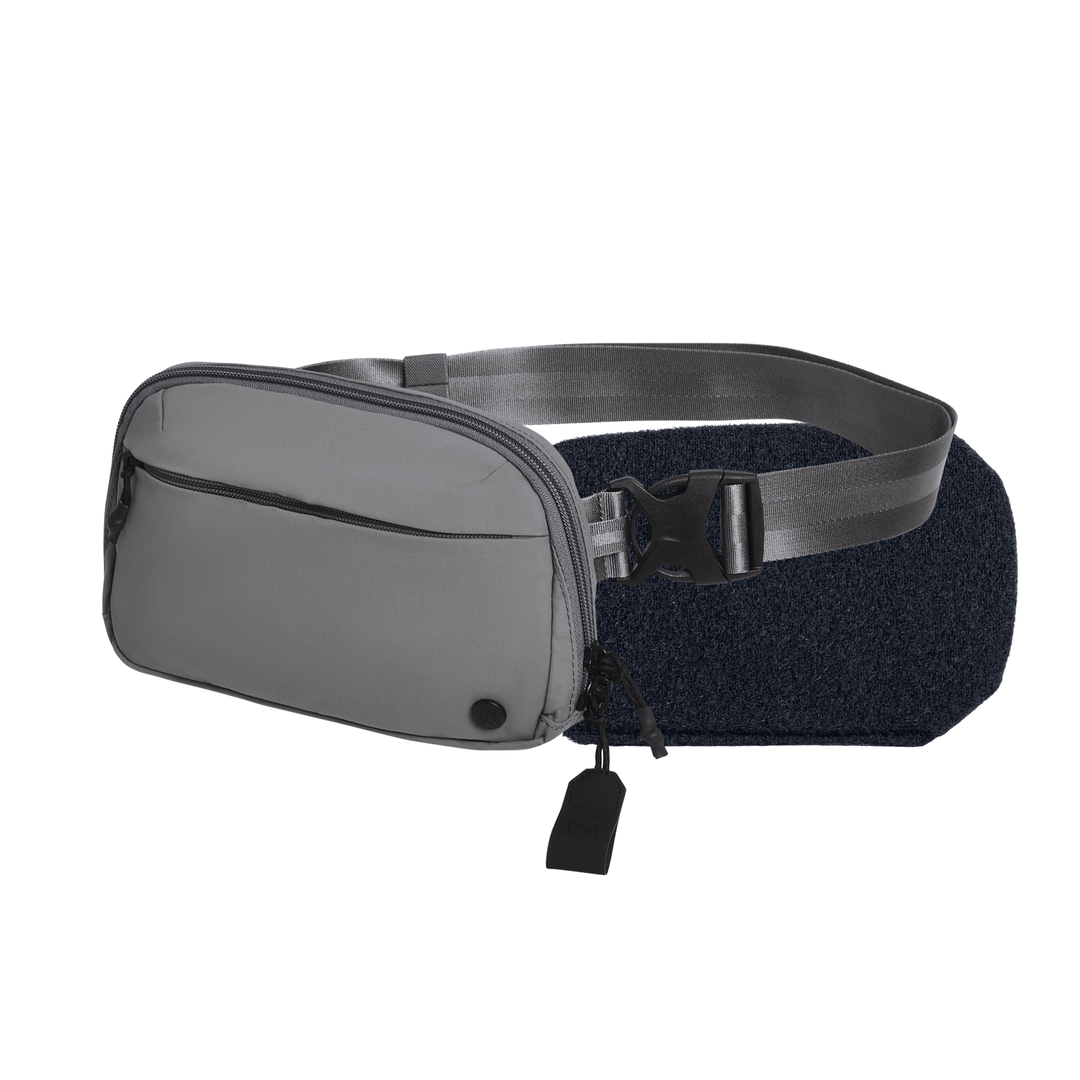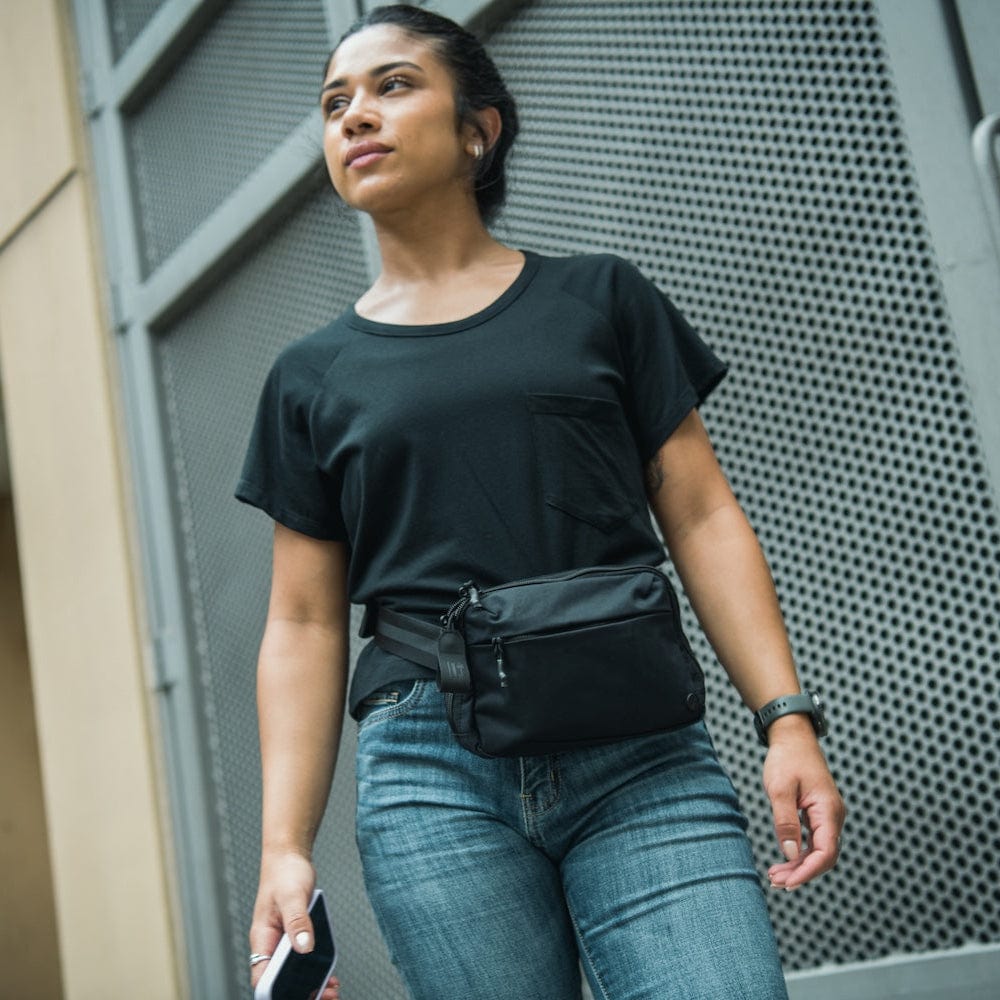Welcome to our curated collection of female body armor products, designed with the modern woman in mind. Our selection includes a range of items such as a female concealable armor vest, bulletproof purse panels, a bulletproof laptop case, and a bleed kit. We understand the unique challenges women face in today's world and are dedicated to providing solutions that offer protection, peace of mind, and effortless integration into daily life. Our body armor products are thoughtfully designed to blend seamlessly into women's lives without compromising on lifestyle, ensuring you can live confidently and securely every day. Explore our collection and discover the perfect balance of safety and style, or learn more about female body armor.
Female Body Armor vs. Male Body Armor:
The main difference between male and female body armor vests are the shape and adjustability of the vest. Female body armor is designed to contour to the curves of the female body, with a narrower waist and wider hips than male body armor. This allows a more natural, comfortable fit for women who require ballistic protection.

In addition to the shape, female body armor also includes adjustable features such as shoulder straps, waistbands, and cummerbunds to accommodate for different body shapes and sizes. This adjustability is especially important for women who need body armor in an extended use case, such as law enforcement officers and military personnel who wear their armor for long periods of time.
Another key difference is the coverage of the chest area. Women’s body armor has a curve to provide a closer fit, minimizing gaps that can compromise the protection of the armor. That being said, women’s armor is designed to provide the same level of protection as men’s body armor while being more suitable for the female body.
How is women’s body armor different?

Is There A Concealable Body Armor Vest For Women?
Yes, there are concealable body armor vests for women. These vests are specially engineered to fit the female body more comfortably and provide maximum protection from ballistic threats when worn under clothing.
Female body armor is a relatively new phenomenon. Traditionally, women wore body armor designed for a masculine figure, but due to differences in body shape, men’s armor was generally more uncomfortable and compromised protection.
Our Female Concealable Armor Vest is a lightweight, low profile armor vest that protects against Level IIIA threats. It features six points of adjustability and a design that caters to the female body.
Things To Consider With A Women's Body Armor Vest For Ballistic Protection:
When considering women’s body armor vests for ballistic protection, there are several key factors to take into account, such as the armor core, fit, and concealment.
Female body armor core / plates:
It is important to consider the core of the vest or the plates the carrier holds because this can dictate the level of protection the vest provides. If the ballistic protection is a concealable vest, then it is vital to understand what the core is made of, and what level of protection it provides in accordance with NIJ standards. If the armor is a plate carrier, then understanding the type of plate, whether it is single or multi-curve, and the material of the plate is essential.
There aren’t many armor plates specifically designed for women. That being said, a multi-curve plate would likely be more comfortable, as they have natural curves that will provide a better fit in the chest area.
Fitting for female body armor:
Another crucial factor to consider is fit. It is important to ensure that the vest or plate carrier is specifically designed to fit the female body shape, whether it be through adjustable straps or plates that provide adequate coverage. A shorter vest torso length is also important, as it will prevent the vest from riding up and causing a gap while sitting.

Female body armor stab and slash-resistance:
Some female body armor can be designed with stab and slash resistance in mind, particularly concealable armor. This is important for people who may routinely face knife threats, such as law enforcement or military personnel. Soft armor in general has a natural stab and slash resistance. Whether specifically designed for men or women, soft body armor is flexible and will naturally mold to any wearer over time.
Concealability of bulletproof vests for women:
For those worried about concealability, it is important to consider the size and weight of the body armor. For obvious reasons, a plate carrier is harder to conceal than a ballistic vest, and some ballistic vests are designed to be more lightweight and discreet than others. Understanding these factors helps to ensure a comfortable fit at all times. Consider clothing that can help conceal a vest, like a blazer, jacket, or oversized sweather. These items can help minimize printing.
What Level of Female Body Armor Should You Get?
When deciding on the level of female body armor to get, it is important to consider specific threats that are expected to be faced. The level of body armor refers to its ability to stop bullets from different types of firearms, whether it be a handgun, a rifle, or a shotgun.
Level 2 body armor for women:
Level 2 body armor for women is designed to stop lower velocity rounds fired from handguns. This includes ammunition such as .357 Magnum and .9mm. Level 2 armor can also provide protection against knife threats, but one should ensure that the vest is explicitly rated for such.
Level 3A female body armor:
Level IIIA body armor is designed to stop even higher velocity handgun rounds, such as .44 Magnum and .45 ACP. It is important to remember that this level does not provide as much stopping power as Level 3 armor.

Level 3 female bulletproof vests:
Level 3 female bulletproof vests are designed to stop higher velocity handgun rounds and some higher caliber rifle rounds, such as 5.56mm and 7.62x39mm. Level 3 armor will also provide protection against anything Level IIIA or Level II armor would protect against.
Level 3+ female body armor:
Level 3+ body armor for women offers additional protection against higher velocity rifle rounds, such as 5.56mm and 7.62x51mm. Keep in mind that any armor rating with a “+” designation is not officially rated by the NIJ. Instead, “+” level armor is a rating given by armor manufacturers who determine the meaning. At Premier Body Armor, any armor rated with a "+" indicates that the armor has been special threat tested to perform above the standard NIJ rounds.
Level 4 body armor for women:
Level 4 body armor for women provides the highest level of protection as indicated by the NIJ, and is capable of stopping armor-piercing rounds from rifles such as the .30-06 M2 AP and .338 Lapua Magnum. Level 4 body armor is almost always hard body armor, meaning it comes in the form of armor plates typically worn in a plate carrier. This is important to keep in mind, as a plate carrier setup can potentially sacrifice concealability and mobility for stopping power.
Female Concealable Body Armor Vest FAQs:
Can Women Wear Men’s Body Armor?
While it is possible for women to wear men’s body armor, it is recommended women wear armor designed for the female form, when possible. Men’s body armor is not designed to fit the female body shape, which can lead to discomfort and reduced protection. That being said, a woman could wear men’s body armor if absolutely necessary, and no better alternative exists, although it is important to understand the drawbacks of wearing armor that may not fit properly.
How Heavy is Level 3A Female Body Armor?
The weight of Level IIIA female body armor can vary depending on the specific model and manufacturer. On average, level 3a female body armor weighs between 2.5 to 6 pounds, depending on the product. Vests will usually weigh more than bulletproof purse inserts.
Is Female Level 3A Body Armor Stab Proof?
While Level 3a female body armor is not designed to be stab-proof, it will provide some protection against knife attacks. That being said, if protection against stab and slash threats is a priority, consider selecting body armor that is specifically engineered to resist these threats.
What is Level 3A Female Bulletproof Vest Rated for?
Level IIIA armor, in general, will stop most threats you could encounter in daily life. This includes common handgun rounds. If you are looking for protection for day-to-day activities, Level 3A protection, whether in the form of a vest or backpack insert, will suffice.
What is Female Body Armor made of?
Female body armor is composed of the same materials as men’s body armor, such as kevlar, ceramic, and high-density polyethylene. These materials can be used separately or in conjunction with one another for multi-threat protection.

How Often Should Female Body Armor be Replaced?
The lifespan of female body armor varies depending on the materials used, specific model and manufacturer, as well as frequency and conditions of use. It is recommended to follow manufacturer guidelines for replacement, which is usually every 5-7 years, or after significant impact. It is also important to regularly inspect every part of your setup for signs of wear or damage.
frequently asked questions
We will sell body armor to civilians, Law Enforcement Officers, and Military Personnel in the United States who meet the following criteria:
1. Are 18 years of age or older
2. Are not a felon;
3. Are legally allowed to possess and use the item(s) in your state (If you are a New York or Connecticut resident, you must be active Law Enforcement or Military Personnel and provide necessary credentials);
4. Are purchasing this product for only lawful purposes;
5. Are purchasing this product on your own behalf;
6. Comply with all other Terms & Conditions.
Learn more about the legality of body armor in each state.
STRATIS Plates have an 8-year warranty. Fortis plates have a 7-year warranty. Soft body armor panels (for vests and backpacks) have a 5-year warranty, and each carrier has a 2-year warranty.
For warranties on specific products, please see the product page.
All products (excluding clearance items) are eligible for an easy return or exchange if initiated within 30 days of receipt, and the product(s) is in new, unused condition.
There is no re-stocking fee for returns or exchanges. The customer is responsible for any return shipping costs associated with returning the product.
Read more about our returns & exchange information.

